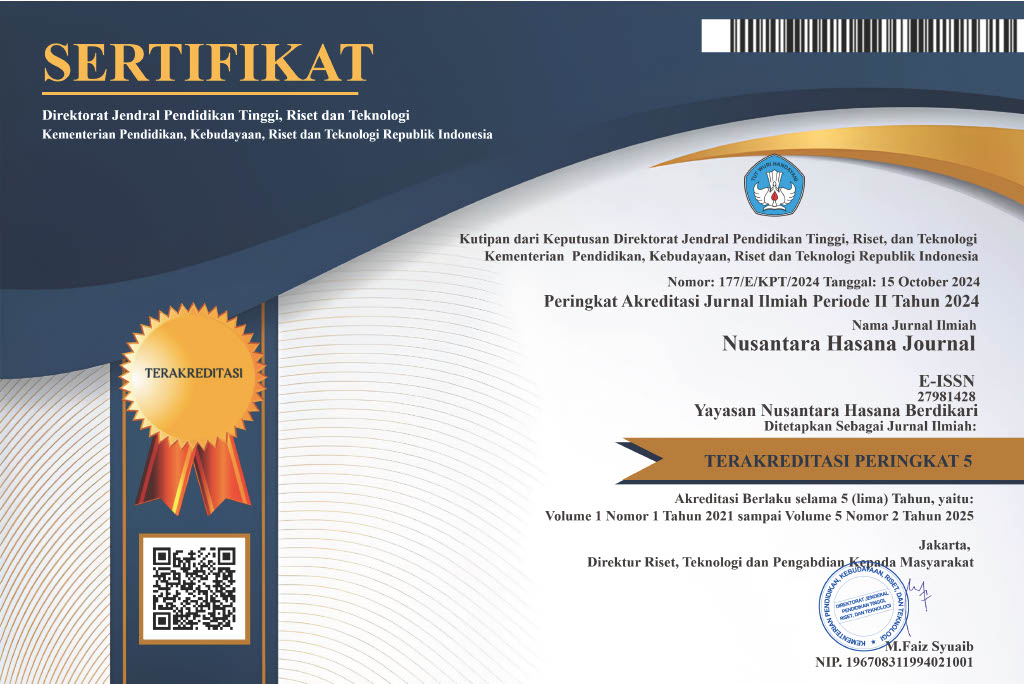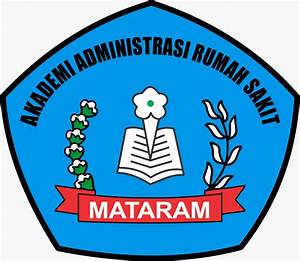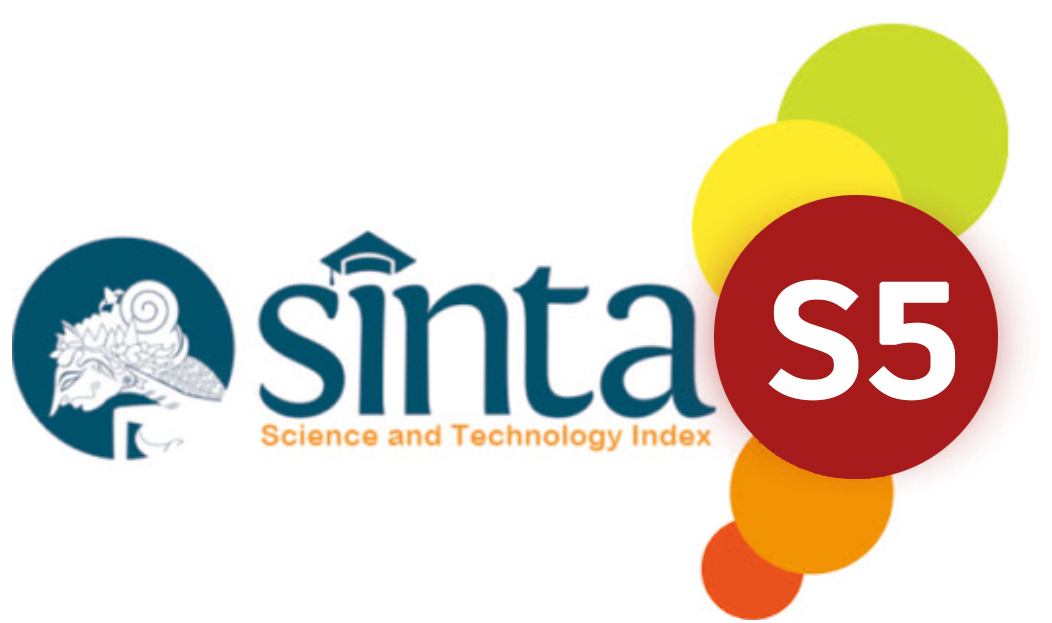HASIL PEMBERDAYAAN KADER-KESEHATAN-NAGARI MENGGUNAKAN APLIKASI-ANDROID UNTUK MENEMUKAN LANSIA RISIKO TINGGI STROKE TAHUN 2024
DOI:
https://doi.org/10.59003/nhj.v4i12.1424Keywords:
RISTI elderly; android application “Prevent-Stroke-Erdanela”; village health cadres; education and training; risk factors and risk levels of strokeAbstract
Stroke is a non-communicable disease (NCD) that causes death and disability in Indonesia. Half of strokes occur in those over 75 years of age. More than half of the elderly in Indonesia are at high risk (RISTI) for stroke. One effective stroke prevention strategy is to focus on the RISTI population, risk factor management, and implement the use of mobile technology (Electronic Health Information Technology) in health professionals and the general public. There are no trained health cadres in efforts to prevent stroke in the elderly using mobile technology in Nagari-Gurun-Panjang-Utara. Improving the knowledge and skills of village health cadres using the android application "Cegah-Stroke-Erdanela" in finding elderly RISTI-stroke. Community Empowerment is carried out using the Education and Training method, carried out face-to-face and through WhatsApp groups, implemented in Nagari Gurun Panjang Utara, Bayang District, South Coast Regency, West Sumatra Province in August 2024. Partners are 10 village health cadres. Cadre knowledge is measured using pre-test and post-test questionnaires, while cadre skills are measured by observation using a checklist. Data analysis is descriptive and presented with narratives, tables and pictures. The knowledge of village health cadres using the android application to find elderly RISTI-stroke, increased by 5.70. Village health cadres who are skilled at using the application properly and correctly at the end of the training were 90%. Education and Training have succeeded in increasing the knowledge and skills of village health cadres in using the android application to find elderly RISTI-stroke in an effort to prevent stroke.
Downloads
References
Kementerian Kesehatan RI. Profil Kesehatan Indonesia Tahun 2019. Jakarta: Kementerian Kesehatan RI; 2020.
Setiawati E. Stroke Prone Profile dan Tingkat Risiko Stroke Lansia Panti Jompo Provinsi Sumatera Barat Tahun 2021. Scientific Journal. 2022 May 1;1(3):222-30.
Kemenkes RI, (2017). Penyebab Kematian Tertinggi di Indonesia: Stroke dan Jantung. (diunduh 31 Maret 2024). Tersedia dari https://www.kemkes.go.id/article/view/17073100005/penyakit-jantung-penyebab-kematian-tertinggi-kemenkes-ingatkan-cerdik-.html
World Stroke Organization (2019). why-stroke-matters. (diunduh 31 Maret 2024). Tersedia dari: https://www.world-stroke.org/world-stroke-day-campaign/why-stroke-matters
WHO. Digital Health. 2020 (diunduh 31 Maret 2024). Tersedia dari https://www.who.int/health-topics/digital-health#tab=tab_2
Goldstein LB, MD, FAHA, et al, Guidelines for the Primary Prevention of Stroke, (2011), Volume 42, Issue 2, February 2011; Pages 517-584 https://doi.org/10.1161/STR.0b013e3181fcb238
Dupre CM, Libman R, Dupre SI, Katz JM, Rybinnik I, Kwiatkowski T. (2014). "Stroke chameleons". Journal of Stroke and Cerebrovascular Diseases. 23 (2):374–8. doi:10.1016/j.jstrokecerebrovasdis.2013.07.015. PMID 23954604
Feigin, VL., Norrving, B., George, M. G., Foltz, J. L., Roth, G. A., & Mensah, G. A. (2016). Prevention of stroke: a strategic global imperative. Nature reviews. Neurology, 12(9), 501–512. https://doi.org/10.1038/nrneurol.2016.107
Kuklina EV, Tong X, George MG, Bansil P. (2012). Epidemiology and prevention of stroke: a worldwide perspective. Expert Rev Neurother. Feb;12(2):199-208. doi: 10.1586/ern.11.99. PMID: 22288675; PMCID: PMC4478589.
Kementerian Kesehatan RI. Pedoman Pengendalian Stroke. 2013 [diunduh 31 Maret 2024]. Tersedia dari: https://p2ptm.kemkes.go.id/informasi-p2ptm/pedoman-pengendalian-stroke
Pusat Pencegahan dan Pengendalian Penyakit Tidak Menular (P2PTM). Germas Cegah Stroke. Kementerian Kesehatan RI; 2017 [diunduh 1 Juli 2024]. Tersedia dari: http://p2ptm.kemkes.go.id/dokumen-ptm/germas-cegah-stroke
Kementerian Kesehatan RI. Peraturan Menteri Kesehatan Republik Indonesia Nomor 8 Tahun 2019 tentang Pemberdayaan Masyarakat Bidang Kesehatan. 2019.
Sulaeman ES, Karsidi R, Murti B, Kartono DT, Waryana, Hartanto R. Model pemberdayaan masyarakat bidang kesehatan. J Kesehat Masy Nas. 2012;7(4).
Setiawati E, Lipoeto NI, Syafrita Y, Bachtiar A. Design and evaluation of stroke prevention-based Android system using user experience questionnaire (UEQ) for elderly caregivers at nursing home. Int J Tech Phys Probl Eng. 2023;15(2):181-1.
Alanzi TM. Users' satisfaction levels about mHealth applications in post-COVID-19 times in Saudi Arabia. PLoS One. 2022;17(5):1–11. doi:10.1371/journal.pone.0267002
Sunjaya AP. Potensi, aplikasi, dan perkembangan digital health di Indonesia. J Indon Med Assoc. 2019;69(4).
Sudirman H, Yuliyanti C, Sari AI. Effectiveness of ‘FAST’ stroke campaign for fast stroke recognition and response: A systematic review. In: Proceedings of the International Conference on Applied Science and Health. 2018;3:112-121.
Srywahyuni A, Amelia D, Merianti L, Wulandari SN. Penggunaan scorecard untuk menganalisis faktor risiko stroke di Sumatera Barat, Indonesia. In: Proceedings of the International Conference on Applied Science and Health. 2019;4:336-342.
National Stroke Association. Stroke Risk Scorecard. 2018. [serial online] Available from: http://www.stroke.org/sites/default/files/
Downloads
Published
How to Cite
Issue
Section
License
Copyright (c) 2025 Erdanela Setiawati

This work is licensed under a Creative Commons Attribution-NonCommercial-ShareAlike 4.0 International License.
NHJ is licensed under a Creative Commons Attribution-NonCommercial-ShareAlike 4.0 International License.
Articles in this journal are Open Access articles published under the Creative Commons CC BY-NC-SA License This license permits use, distribution and reproduction in any medium for non-commercial purposes only, provided the original work and source is properly cited.
Any derivative of the original must be distributed under the same license as the original.
























